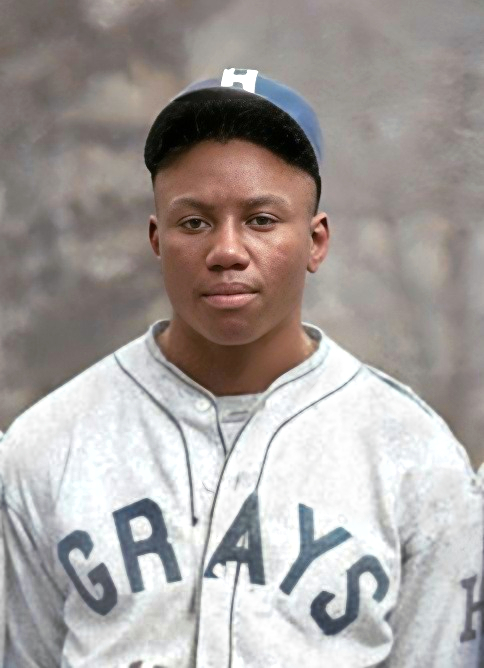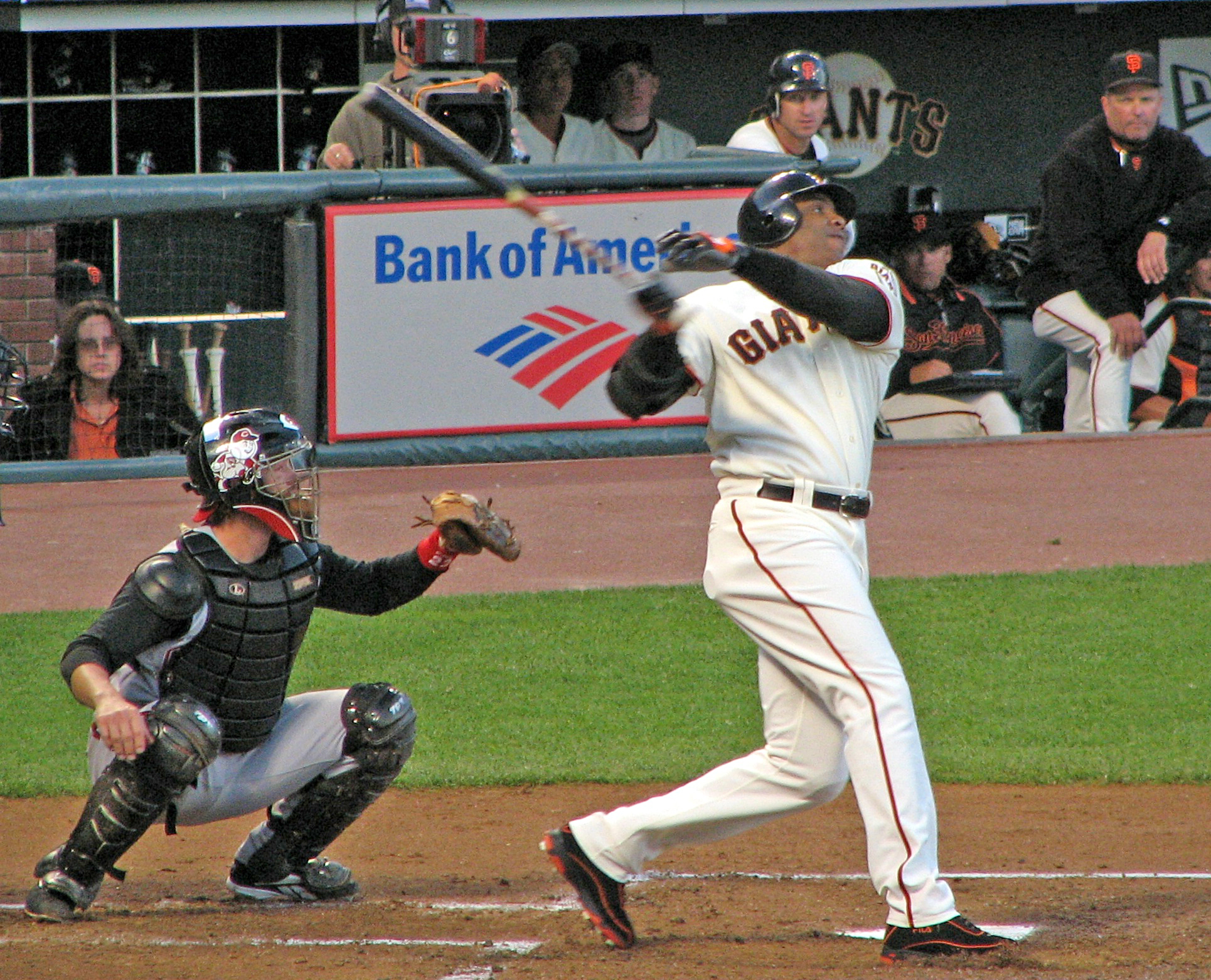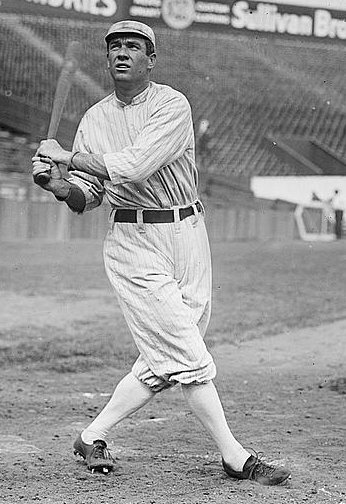|
Mike Kreevich
Michael Andreas Kreevich (June 10, 1908 – April 25, 1994) was an American professional baseball player. He played as a center fielder in Major League Baseball from to . He batted and threw right-handed. Early life Kreevich was born in Mount Olive, Illinois. He started working in coal mines in late 1924 at the age of 16. Although short of stature (five feet and seven and a half inches tall), he developed a muscular physique while coal mining for almost five years. With the Great Depression, the coal mines closed in 1930. It was about this time that he was invited to play for a team in McCook, Nebraska. Kreevich soon went from that small town team to the National League's Chicago Cubs, thanks to a scout who recognized the talent in him. Career Kreevich began his career in with the Chicago Cubs, but only played five games for them. In , he joined the cross-town Chicago White Sox, but did not become a regular until . In he led the American League in triples and sacrifice flies ... [...More Info...] [...Related Items...] OR: [Wikipedia] [Google] [Baidu] |
Center Fielder
A center fielder, abbreviated CF, is the outfielder in baseball who plays defense in center field – the baseball and softball fielding position between left field and right field. In the numbering system used to record defensive plays, the center fielder is assigned the number 8. Position description Outfielders must cover large distances, so speed, instincts and quickness to react to the ball are key. They must be able to catch fly balls above their heads and on the run. They must be able to throw the ball accurately over a long distance to be effective. As well as the requirements above, the center fielder must be the outfielder who has the best combination of speed and throwing distance. The center fielder "covers more 'grass' than any other player" (see photo) and, most likely, will catch the most fly balls. The position also has the greatest responsibility among the three outfielders for coordinating their play to prevent collisions when converging on a fly ball, and o ... [...More Info...] [...Related Items...] OR: [Wikipedia] [Google] [Baidu] |
1944 World Series
The 1944 World Series was an all-St. Louis World Series, matching the St. Louis Cardinals and St. Louis Browns at Sportsman's Park. It marked the third time in World Series history in which both teams had the same home field (the others being the and Series, both played at the Polo Grounds in New York City). It would be 76 years before another World Series had all of its games played in a single ballpark: the Series used Globe Life Field in Arlington, Texas as a neutral site due to health concerns regarding the COVID-19 pandemic. 1944 saw perhaps the nadir of 20th-century baseball, as the long-moribund St. Louis Browns won their only American League pennant. Some of the players were 4-Fs, rejected by the military for physical defects (such as one armed Pete Gray) or limitations that precluded duty. Others divided their time between factory work in defense industries and baseball, some being able to play ball only on weekends. Some players avoided the draft by chance, despit ... [...More Info...] [...Related Items...] OR: [Wikipedia] [Google] [Baidu] |
List Of Major League Baseball Annual Triples Leaders
In baseball, a Triple (baseball), triple is recorded when the ball is hit so that the Batting (baseball), batter is able to advance all the way to third base, Run (baseball), scoring any Baserunning, runners who were already on base, with no Error (baseball), errors by the defensive team on the play. In Major League Baseball (MLB), a player in each league is recognized for leading the league in triple (baseball), triples. Only triples hit in a particular league count toward that league's seasonal lead. The first triples champion in the National League was Ross Barnes; in the league's inaugural 1876 season, Barnes hit fourteen triples for the Chicago White Stockings (1870–89), Chicago White Stockings. In 1901, the American League was established and led by two members of the Baltimore Orioles (1901–02), Baltimore Orioles: Bill Keister and Jimmy Williams (second baseman), Jimmy Williams each had 21. Sam Crawford and Turkey Stearnes each led their respective leagues (the America ... [...More Info...] [...Related Items...] OR: [Wikipedia] [Google] [Baidu] |
Fielding Percentage
In baseball statistics, fielding percentage, also known as fielding average, is a measure that reflects the percentage of times a baseball positions, defensive player properly handles a batted or thrown ball. It is calculated by the sum of putouts and assist (baseball), assists, divided by the number of total chances (putouts + assists + error (baseball), errors). While a high fielding percentage is regarded as a sign of defensive skill, it is also possible for a player of lesser defensive skill to have a high fielding percentage, as it does not reflect or take into account a player's defensive range factor, range; a player who cannot get to a ball surrenders a hit (baseball), hit instead of having an opportunity to make an out (baseball), out or an error (baseball), error. Conversely, a highly skilled fielder might have a comparatively low fielding percentage by virtue of reaching, and potentially missing, a greater number of balls. In order to qualify for the league lead in fie ... [...More Info...] [...Related Items...] OR: [Wikipedia] [Google] [Baidu] |
Slugging Percentage
In baseball statistics, slugging percentage (SLG) is a measure of the batting productivity of a hitter. It is calculated as total bases divided by at-bats, through the following formula, where ''AB'' is the number of at-bats for a given player, and ''1B'', ''2B'', ''3B'', and ''HR'' are the number of singles, doubles, triples, and home runs, respectively: : \mathrm = \frac Unlike batting average, slugging percentage gives more weight to extra-base hits such as doubles and home runs, relative to singles. Such batters are usually referred to as sluggers. Plate appearances resulting in walks, hit-by-pitches, catcher's interference, and sacrifice bunts or flies are specifically excluded from this calculation, as such an appearance is not counted as an at-bat (these are not factored into batting average either). The name is a misnomer, as the statistic is not a percentage but an average of how many bases a player achieves per at bat. It is a scale of measure whose computed ... [...More Info...] [...Related Items...] OR: [Wikipedia] [Google] [Baidu] |
On-base Percentage
In baseball statistics, on-base percentage (OBP) measures how frequently a batting (baseball), batter reaches base (baseball), base. An official Major League Baseball (MLB) statistic since 1984, it is sometimes referred to as on-base average (OBA), as it is rarely presented as a true percentage. Generally defined as "how frequently a batter reaches base per plate appearance", OBP is specifically calculated as the ratio of a batter's times on base (the sum of Hit (baseball), hits, base on balls, bases on balls, and times hit by pitch) to the sum of at bats, bases on balls, hit by pitch, and sacrifice fly, sacrifice flies. OBP does not credit the batter for reaching base on error (baseball), fielding errors, fielder's choice, uncaught third strikes, Obstruction (baseball), fielder's obstruction, or catcher's interference, and deducts from plate appearances a batter intentionally giving himself up in a sacrifice bunt. OBP is added to slugging average (SLG) to determine on-base plus ... [...More Info...] [...Related Items...] OR: [Wikipedia] [Google] [Baidu] |
Bases On Balls
A base on balls (BB), better known as a walk, occurs in baseball when a batter receives four pitches during a plate appearance that the umpire calls '' balls'', and is in turn awarded first base without the possibility of being called out. The base on balls is defined in Section 2.00 of baseball's Official Rules, and further detail is given in 6.08(a). Despite being known as a "walk", it is considered a faux pas for a professional player to actually walk to first base; the batter-runner and any advancing runners normally jog on such a play. The term "base on balls" distinguishes a walk from the other manners in which a batter can be awarded first base without liability to be put out (e.g., hit by pitch (HBP), catcher's interference). Though a base on balls, catcher's interference, or a batter hit by a pitched ball all result in the batter (and possibly runners on base) being awarded a base, the term "walk" usually refers only to a base on balls, and not the other methods of re ... [...More Info...] [...Related Items...] OR: [Wikipedia] [Google] [Baidu] |
Stolen Bases
In baseball, a stolen base occurs when a runner advances to a base unaided by other actions and the official scorer rules that the advance should be credited to the action of the runner. The umpires determine whether the runner is safe or out at the next base, but the official scorer rules on the question of credit or blame for the advance under Rule 10 (Rules of Scoring) of the MLB's Official Rules. A stolen base most often occurs when a base runner advances to the next base while the pitcher is pitching the ball to home plate. Successful base stealers must be fast and have good timing. Background Ned Cuthbert, playing for the Philadelphia Keystones in either 1863 or 1865, was the first player to steal a base in a baseball game, although the term ''stolen base'' was not used until 1870. For a time in the 19th century, stolen bases were credited when a baserunner reached an extra base on a base hit from another player. For example, if a runner on first base reached third bas ... [...More Info...] [...Related Items...] OR: [Wikipedia] [Google] [Baidu] |
RBIs
A run batted in or runs batted in (RBI) is a statistic in baseball and softball that credits a batter for making a play that allows a run to be scored (except in certain situations such as when an error is made on the play). For example, if the batter bats a base hit which allows a teammate on a higher base to reach home and so score a run, then the batter gets credited with an RBI. Before the 1920 Major League Baseball season, runs batted in were not an official baseball statistic. Nevertheless, the RBI statistic was tabulated—unofficially—from 1907 through 1919 by baseball writer Ernie Lanigan, according to the Society for American Baseball Research. Common nicknames for an RBI include "ribby" (or "ribbie"), "rib", and "ribeye". The plural of "RBI" is a matter of "(very) minor controversy" for baseball fans:; it is usually "RBIs", in accordance with the usual practice for pluralizing initialisms in English; however, some sources use "RBI" as the plural, on the basis ... [...More Info...] [...Related Items...] OR: [Wikipedia] [Google] [Baidu] |
Home Runs
In baseball, a home run (abbreviated HR) is scored when the ball is hit in such a way that the batter is able to circle the bases and reach home plate safely in one play without any errors being committed by the defensive team. A home run is usually achieved by hitting the ball over the outfield fence between the foul poles (or hitting either foul pole) without the ball touching the field. Inside-the-park home runs where the batter reaches home safely while the baseball is in play on the field are infrequent. In very rare cases, a fielder attempting to catch a ball in flight may misplay it and knock it over the outfield fence, resulting in a home run. An official scorer will credit the batter with a hit, a run scored, and a run batted in (RBI), as well as an RBI for each runner on base. The pitcher is recorded as having given up a hit and a run, with additional runs charged for each base-runner that scores. Home runs are among the most popular aspects of baseball ... [...More Info...] [...Related Items...] OR: [Wikipedia] [Google] [Baidu] |
Triple (baseball)
In baseball, a triple is the act of a Batter (baseball), batter safely reaching third base after hitting the ball, with neither the benefit of a fielder's misplay (see error (baseball statistics), error) nor another baserunner, runner being put out on a fielder's choice. A triple is sometimes called a "three-bagger" or "three-base hit". For baseball statistics, statistical and baseball scorekeeping, scorekeeping purposes it is denoted by 3B. Triples have become somewhat rare in Major League Baseball, less common than both the Double (baseball), double and the home run. This is because it requires a ball to be hit solidly to a distant part of the field (ordinarily a line drive or Fly ball (baseball), fly ball near the Foul line (baseball), foul line closest to Right fielder, right field), or the ball to take an irregular bounce in the outfield, usually against the wall, away from a outfielder, fielder. It also requires the batter's team to have a good strategic reason for wanting ... [...More Info...] [...Related Items...] OR: [Wikipedia] [Google] [Baidu] |
Double (baseball)
In baseball, a double is the act of a batter striking the pitched ball and safely reaching second base without being called out by the umpire, without the benefit of a fielder's misplay (see error) or another runner being put out on a fielder's choice. A double is a type of hit (the others being the single, triple and home run) and is sometimes called a "two-bagger" or "two-base hit". For statistical and scorekeeping purposes it is denoted by 2B. Description Typically, a double is a well-hit ball into the outfield that finds the "gap" between the center fielder and one of the corner outfielders, bounces off the outfield wall and down into the field of play, or is hit up one of the two foul lines. To hit many doubles, a batter must have decent hitting skill and power; it also helps to run well enough to beat an outfield throw. Many of the best double hitting batters were revered for high baseball IQ and the ability to slide well and turn a single into an extra-base h ... [...More Info...] [...Related Items...] OR: [Wikipedia] [Google] [Baidu] |








